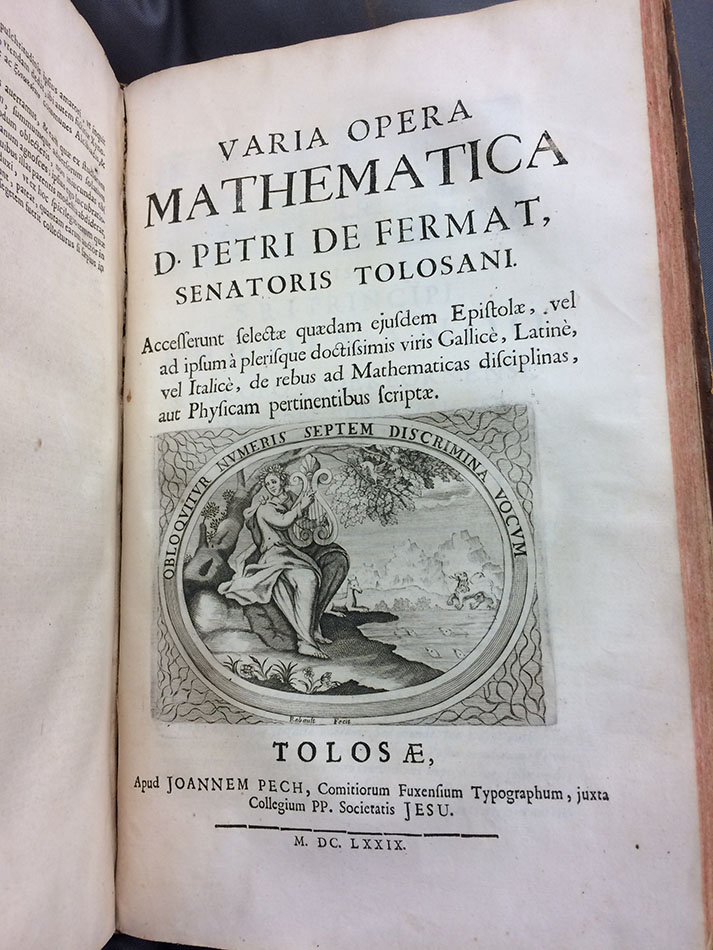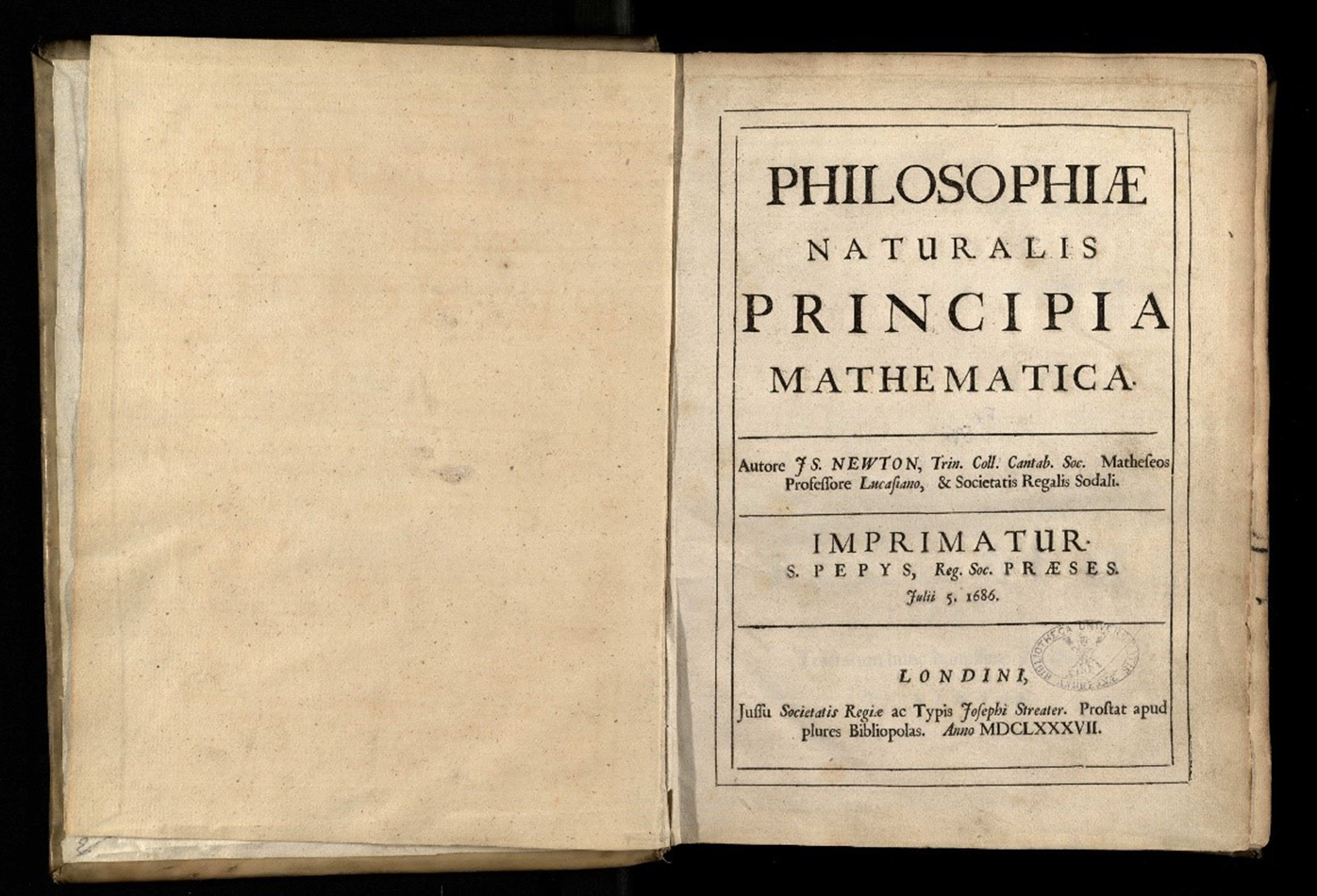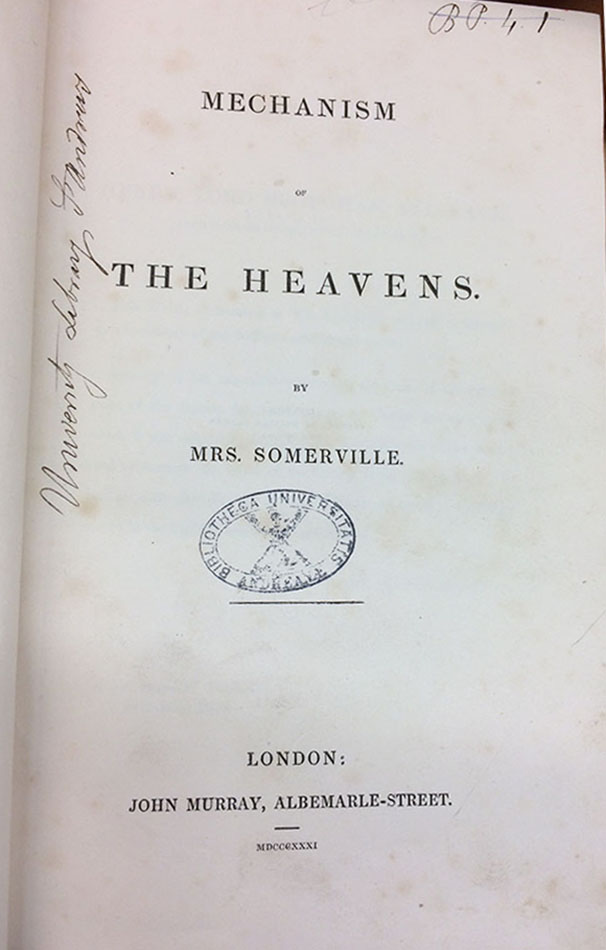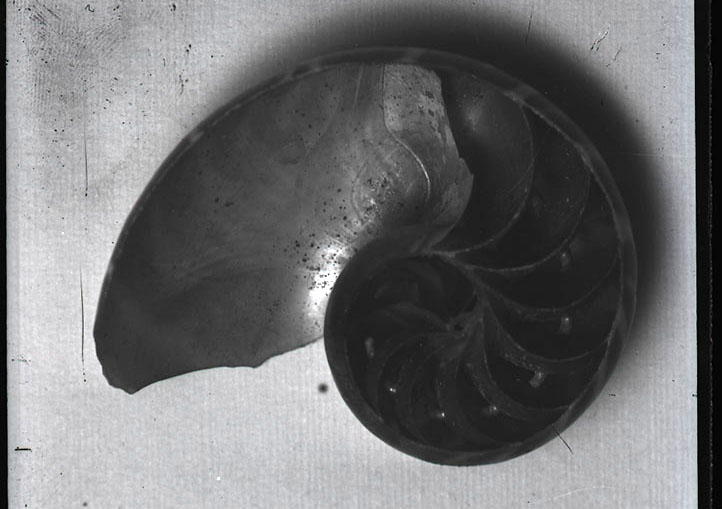Maths Week Scotland
As part of the first Maths Week Scotland, the Library is hosting a display of highlights of the University’s mathematical manuscripts and rare books. Maths Week Scotland is a brand new initiative to help everyone in our nation see maths positively. The aim is for everyone to experience the benefits, joy and beauty of maths in exciting new ways as maths is explored and celebrated throughout Scotland. Further information and events can be found at http://www.gov.scot/mathsweek.
Maths Week Scotland has been created as a result of the Scottish Government initiative Making Maths Count which seeks to raise the profile of maths and its importance in all aspects of our lives.
Some of the highlights on display will include:
John Napier, Mirifici Logarithmorum Canonis Descriptio (Edinburgh, 1614).
Widely regarded as the first Scot to have made a major contribution to scientific learning, John Napier is perhaps best known for inventing logarithms (first published in his Mirifici Logarithmorum Canonis Descriptio (A Description of the Wonderful Law of Logarithms), which reduced complex mathematical operations to the simpler ones of addition, subtraction, multiplication, and division. Napier’s invention made enabled more calculations to be completed in an hour than had previously been possible in one day.

Pierre de Fermat, Varia Opera Mathematica (Toulouse, 1679).
First edition of the first publication of many of Fermat’s papers, including his important researches in analytic geometry, the methods of maxima and minima, and the theory of numbers and probability, together with his correspondence with Pascal, Gassendi, Mersenne, Roberval and other mathematicians.
Fermat’s Last Theorem had been widely regarded by many mathematicians as seemingly intractable. First formulated by the French mathematician Pierre de Fermat in 1637, it states:
There are no whole number solutions to the equation xn + yn = zn when n is greater than 2, unless xyz=0.
Fermat himself claimed to have found a proof for the theorem but said that the margin of the text he was making notes on was not wide enough to contain it. Professor Sir Andrew Wiles, Royal Society Research Professor at the University of Oxford, first became fascinated with the problem as a boy. After seven years of intense study in private at Princeton University, he announced he had found a proof in 1993, combining three complex mathematical fields – modular forms, elliptic curves and Galois representations.
Sir Andrew was awarded the 2016 Abel Prize ‘for his stunning proof of Fermat’s Last Theorem by way of the modularity conjecture for semistable elliptic curves, opening a new era in number theory’.

Isaac Newton, Naturalis Principia Mathematica (London, 1687)
Newton’s monumental Philosophiæ Naturalis Principia Mathematica, often shortened to Principia, was published in July 1687 and brought him international fame. In this three-part work, he lays out in mathematical terms his laws of motion and account of universal gravitation. He demonstrates that the motions of heavenly (and earthly) bodies were governed by the law of gravitation.


Mary Somerville, Mechanism of the Heavens (London, 1831)
With the publication of Mechanism of the Heavens in 1831, Mary Somerville established herself as one of the pre-eminent figures in early nineteenth-century British science. The work brought to an English-speaking audience a translation and condensed explication of the seminal five-volume Traité de mécanique céleste, which had been written by the French astronomer Pierre-Simon Laplace between 1798 and 1827. In Mechanism of the Heavens, Somerville sought to render Laplace’s important theories more accessible, chiefly by the addition of numerous geometrical diagrams and by drawing out the most fundamental concepts underpinning his ideas.
Born in Jedburgh, Mary Somerville spent much of her childhood in Burntisland, Fife. She had only one year of formal education, and was otherwise self-taught. In 1832, one of Somerville’s friends, the Scottish dramatist and poet Joanna Baillie, expressed her belief that Mechanism of the heavens had “done more to remove the light estimation in which the capacity of women is too often held, than all that has been accomplished by the whole sisterhood of poetic damsels and novel-writing authors”.
Euclid, The first six books of the Elements of Euclid (London, 1847)
The 19th century mathematician Oliver Byrne employed the colour scheme for the figures and diagrams in his most unusual 1847 edition of Euclid’s Elements in which coloured diagrams and symbols are used instead of letters. This example of Victorian printing has been described as one of the oddest and most beautiful books of the 19th century and demanded the most meticulous alignment of the different colour plates for printing.

Manuscript of D’Arcy Wentworth Thompson, On Growth and Form, which celebrates its centenary this year.
D’Arcy Wentworth Thompson, born in 1860, was a professor of natural history, first at Dundee and then at St Andrews, for an astonishing 63 years. He was also a distinguished classicist and a powerful mathematician. With his mathematical background, he was struck by how precisely the shape and form of living organisms conform to simple mathematical laws, the equations that generate patterns, cones and pyramids, spirals and waves and the topological rules of geometry. The spirals of a sunflower seed head, like the whorls of a pine cone, are arranged in a Fibonacci series – in which each turn of the spiral has a number of seeds that are the sum of the two preceding numbers, 1, 1, 2, 3, 5, 8 and so on. A similar pattern is found in the broadening spirals of a snail shell.

The event is on Wednesday 13th September at 2pm in the Richardson Research Library in Martyrs Kirk on North Street, St Andrews. The event is free, and open to all. Please come and join us.
Gabriel Sewell
Assistant Director of Library Services (Special Collections)